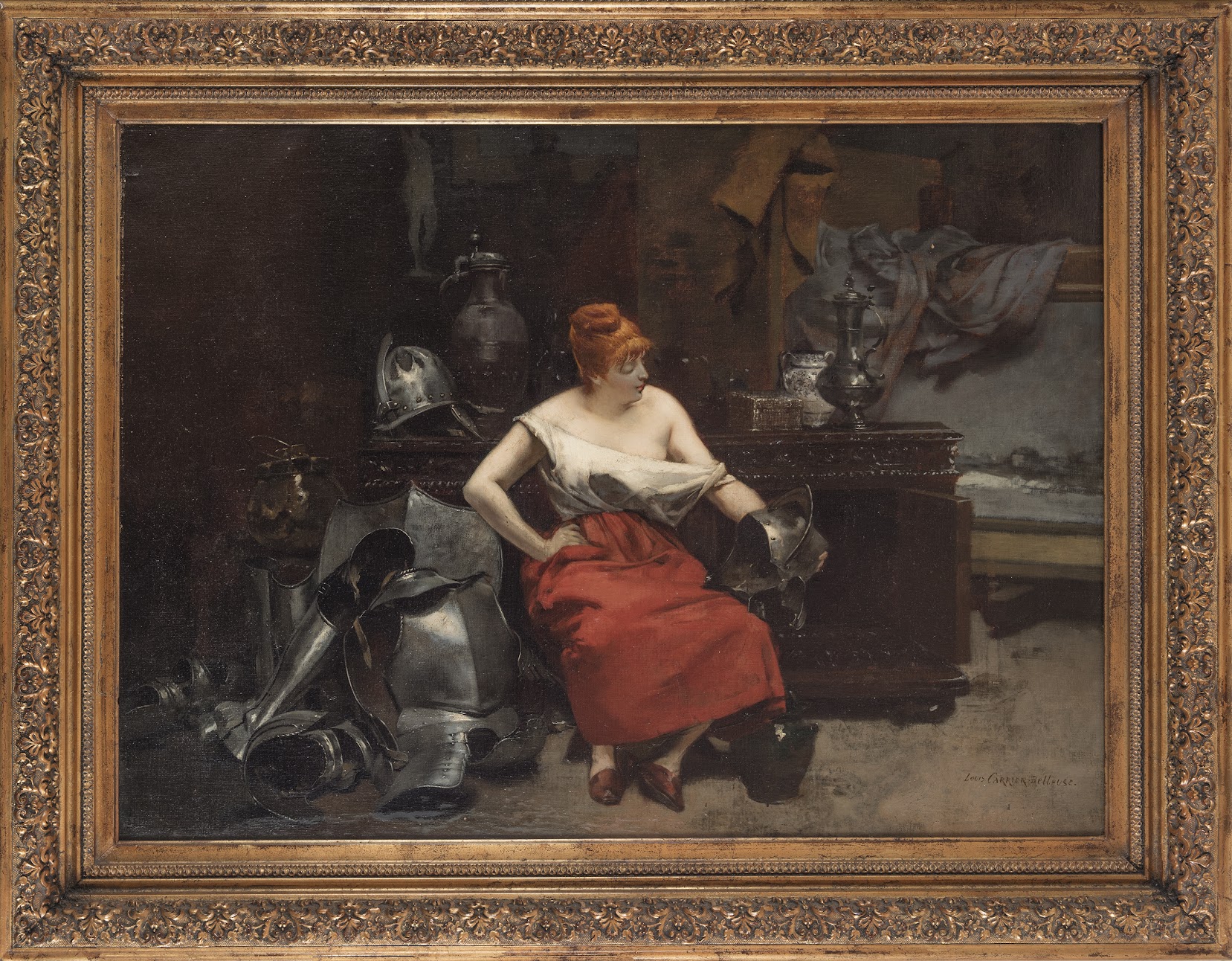Louis-Robert-Mary Carrier-Belleuse, born in Paris on July 4, 1848, was a French artist recognized for his versatility as a painter, sculptor, and ceramist.
Coming from an artistic family, Louis-Robert was the son of Albert-Ernest Carrier-Belleuse, a famous sculptor, and the brother of the painter-pastellist Pierre Carrier-Belleuse. At just thirteen years old, he joined a bronze workshop where he acquired skills in chiseling and foundry work. In parallel, he received training at the École des beaux-arts in Paris, where he was mentored by masters such as Gustave Boulanger and Alexandre Cabanel.
Carrier-Belleuse made his debut at the Salon of 1870 with the work “La Lettre.” By 1877, he began to specialize in ceramics under the tutelage of Théodore Deck. His works are characterized by their ability to capture Parisian life, illustrating both popular trades and everyday scenes. Paintings such as “Porteurs de farine” (1885) and “Une équipe de bitumiers” reflect his commitment to depicting the social reality of his time. As a sculptor, he also made a name for himself with monumental works, including the “Monument national du Costa Rica,” which celebrates national identity in the face of invasions.
The artist received several honors, including an honorable mention at the Salon des Artistes français in 1881 for his work “Un étameur” and a silver medal at the 1889 Exposition Universelle. That same year, he became the artistic director at the Faïencerie de Choisy-le-Roi, where he developed bold designs, such as the famous “Vase à couvercle Sauve qui peut.”
Carier-Belleuse passed away in the 9th arrondissement of the same city on June 14, 1913.

Sign up to the newsletter and stay informed about our latest acquisitions and exhibitions:
© Galerie Rousset 2023